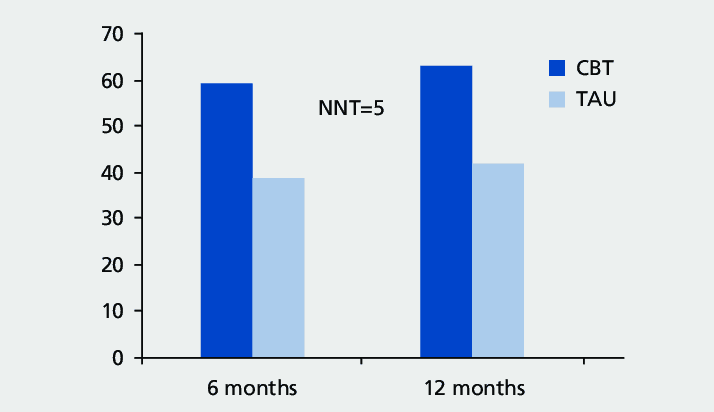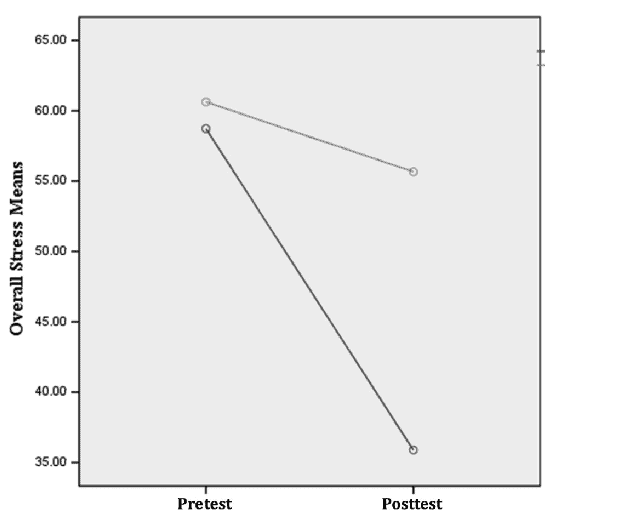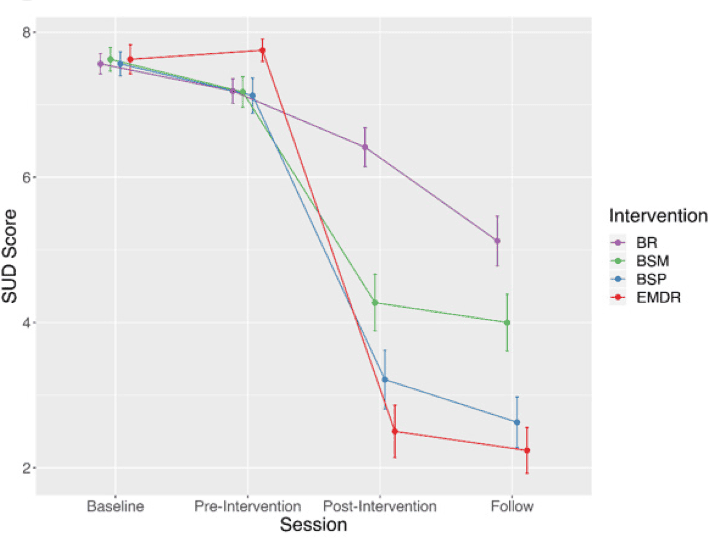
Annemieke Van Dam
(DipCAH, RSH.DipPH, WCA Cert. Wellness Coaching)
The road to health, physical or mental, is not always the same, and depending on our situation, different routes might need to be taken.
This is why over the last few decades different types of therapies have emerged, and a combination of such therapies such as:
- Acceptance and Commitment Therapy (ACT)
- Brain Working Recursive Therapy (BWRT)
- Cognitive-Behavioural Hypnotherapy (CBH)
- Emotional Freedom Technique (EFT)
- Eye Movement Desensitisation and Reprocessing (EMDR)
- Ericksonian Hypnosis
can help the psychologists and hypnotherapists to become more personalised in their approach to a specific issue and individual.
Acceptance and Commitment Therapy (ACT)
Acceptance and commitment therapy was developed in the 1980s by psychologist Steven C. Hayes, a University of Nevada professor.
Acceptance and commitment therapy is based on the concept that it is counter-productive to try to control painful emotions or psychological experiences and that suppression of these feelings ultimately leads to more distress.
ACT suggests that there are alternatives to changing the way we think. These alternatives include:
- mindful behaviour
- attention to personal values
- commitment to action
Emerging research shows that ACT treats a wide range of psychiatric problems, including:
- psychosis
- depression
- obsessive-compulsive disorder
- trichotillomania
- generalised anxiety disorder
- post-traumatic stress disorder
- borderline personality disorder
- eating disorders
- drug-dependence
- smoking cessation
It can also assist with the management of:
- multiple sclerosis
- tinnitus
- work stress
- epilepsy
- chronic pain
- diabetic self-management
RELATED — Diabetes: Early Signs, Causes, Types and Treatment
Furthermore, ACT studies also show improvements in learning specific skills, such as decreasing experiential avoidance, increasing cognitive dispersal, acceptance and contact with the present moment and an overall improved quality of life.[1,2]
Psychotherapy and Psychosomatics published a report on a meta-analysis of 39 randomised controlled trials on the efficacy of acceptance and commitment therapy (ACT), including 1,821 patients with mental disorders or somatic health problems.[3]

Source: Mousavi, Seyedeh Maryam et al. Effectiveness of Acceptance and Commitment-Based Therapy (ACT Rehab) on Quality of Life, Severity and Duration of Pain; in Women With Chronic Low Back Pain. (2018)
The findings indicated that ACT is more effective than traditional treatment or a placebo, and that ACT may be as effective in treating anxiety disorders, depression, addiction, and somatic health problems.[4]
Although ACT has many benefits, it is not a solution for everyone and studies as to its benefits and limitations are ongoing.
There is no special certification for ACT practitioners and their skills are acquired through peer counselling, workshops, and other training programs.
Brain Working Recursive Therapy (BWRT)
Brain Working Recursive Therapy is based on the principle that our brains respond to events and make decisions before we are aware of them.
Also known as memory reconsolidation, BWRT was developed by psychologist Terrance Watts in 2011.
It relies on the brain’s neuroplasticity that allows an emotional learning stored in long-term implicit memory to be erased, not just overridden and suppressed by the learning of a preferred response.[5,6]
BWRT removes emotive responses from memories that are deeply troubling
It also creates new, adaptive neural pathways that do not have old undesirable emotional responses attached to it. This therapy is largely content-free, using the client’s own thought processes to achieve release from their symptomatic pattern.
The therapy is short in duration compared to traditional approaches. A simple fear or phobia can often be resolved in a single consultation, and other interventions seldomly exceed 4 – 6 sessions.
BWRT psychotherapy is proven to be highly effective in most patients with:
- grief and trauma, including PTSD, abuse and adjustment disorders
- anxiety and phobias, including generalised anxiety disorders, fears and panic attacks
- less than optimal functioning, including lack of self- confidence or motivation, relationship issues and success inhibition
- affective disorders like depression[7,8]
RELATED — Introduction to: Depression
BWRT has not yet been subjected to empirical investigation. Clinical experiences do however suggest there is often an immediate and long-lasting effect following the intervention.
Cognitive-Behavioural Therapy (CBT)
Cognitive-Behavioral therapy was developed by psychiatrist Aaron Beck in the 1960’s.
Cognitive-Behavioral therapy is an approach where we recognise negative or unhelpful thoughts and behaviour patterns and identify and explore the ways our emotions and thoughts can affect our actions.
Once we notice these patterns, we can begin learning how to change our behaviours and develop new coping strategies.[9]
CBT has been extensively researched and found to be effective for:
- depression
- anxiety disorders
- eating disorders
- substance abuse
- personality disorders
- irritable bowel syndrome
- chronic fatigue
- fibromyalgia
- insomnia
- migraines
- chronic pain
It is also used as an adjunct for bipolar disorder and schizophrenia.[10]
CBT focuses on the here and now
The American Psychological Association, suggests the core concepts of CBT include:
- psychological issues that are partly based on unhelpful ways of thinking
- psychological issues that are partly based on learned patterns of behaviour
- those living with these issues can improve with better coping mechanisms and management to help relieve their symptoms
Typical treatment often involves the following:
- recognising how inaccurate thinking can worsen problems
- learning new problem-solving skills
- gaining confidence and a better understanding and appreciation of self-worth
- learning how to face fears and challenges
- using role–play and calming techniques when faced with potentially challenging situations
The goal of these techniques is to replace unhelpful or self-defeating thoughts with more encouraging and realistic ones.

Source: Roy-Byrne, P. Treatment-refractory anxiety; definition, risk factors, and treatment challenges. (2015)
Subtypes of Cognitive-Behavioural therapy
Different subtypes of CBT have emerged since its development in the 1960’s.
Exposure therapy
This type of therapy involves slowly introducing anxiety-inducing activities/situations into one’s life for measured periods of time and is commonly used for dealing with phobias or obsessive compulsive disorder.
Dialectical behaviour therapy (DBT)
DBT incorporates mindfulness and emotional regulation through talk therapy in an individual or group setting. It is effective for people who deal with borderline personality disorder (BPD), eating disorders, or depression.
Acceptance and commitment therapy (ACT)
ACT is a therapy that involves learning to accept negative or unwanted thoughts. It is effective for people who deal with intrusive thoughts or catastrophic thinking.
Mindfulness-based cognitive therapy (MBCT)
MBCT uses mindfulness techniques and meditation along with cognitive therapy. It is effective for people who deal with post-traumatic stress disorder (PTSD) and generalised anxiety disorder (GAD).
RELATED — Introduction to Mindfulness: Enjoy the present moment and appreciate life
Rational emotive behaviour therapy (REBT)
REBT is the original form of CBT and focuses on negative thought patterns and how they influence issues with emotions or behaviours.
It can be effective for anything from anxiety to depression, sleep issues to addictive behaviours and more.
The disadvantages of CBT are that the client needs to commit to the process, attend regular CBT sessions and conduct out of session activities.
Additionally, it may not address wider mental wellness issues, does not extend to others such as family members, and does not address underlying mental issues.
Emotional Freedom Technique (EFT)
Emotional Freedom Technique utilises points along the body’s energy meridians through which the body’s energy flows, and is sometimes called “psychological acupressure”.
EFT was created in the 1990s by Gary Craig who was an engineer with an interest in psychiatry.
The theory behind EFT, is that activating the meridian points helps restore the balance of energy in the body and alleviate both emotional and physical issues.[11]
An EFT sequence involves the following steps:
- Identifying a particular issue that is causing distress.
- Ranking the emotional (or physical) intensity of the issue on a scale of zero to ten.
- Formulating a simple phrase that names the issue and also includes an expression of self-acceptance or self-compassion despite the issue.
- While repeating the phrase, tapping on certain points on the head, collarbone, and under the arm, using a specific sequence of two or more fingertips and tapping five times on each point.
- Re-testing the intensity.
- Repeating the steps until the intensity is minimal or no longer improves.
EFT can be either self-administered or facilitated by a practitioner.
Reviews and meta-analyses show that EFT is an evidence-based practice and that its effectiveness for helping with anxiety, depression, phobias and PTSD is well-established.

Source: Rogers, R., Sears, S. Emotional Freedom Techniques (EFT) for Stress in Students: A Randomized Controlled Dismantling Study. (2015)
A number of studies have been undertaken to investigate the benefits of EFT for post-traumatic stress disorder (PTSD) patients, in particular veterans.
In one study, veterans with PTSD were randomly divided into EFT treatment and traditional treatment.
Psychological distress and PTSD symptoms were compared after one month for the standard care group and a group receiving EFT treatments of six sessions, showing that 90% of the subjects in the EFT group no longer met clinical PTSD criteria.
This was then followed up by providing EFT treatment to the traditional treatment group and the results showed that:
- 60% of subjects were symptom free after three sessions
- 86% of subjects were symptom free at the end of three months
- 80% of subjects were symptom free at the end of six months
The research investigating physiological improvements after EFT intervention is limited, however it does suggest that EFT is associated with multi-dimensional improvements across a spectrum of physiological systems.[12,13,14]
Benefits of EFT are that it is a rapid and easily administered intervention, with the disadvantage being that it is not effective for everyone.
Ericksonian Hypnosis
Ericksonian Hypnosis is a method of indirect hypnosis named after Dr. Milton Erickson, an American psychiatrist and psychologist, and the “father of hypnotherapy”.
Milton found that indirect suggestion could result in therapeutic behavioural change. He preferred to converse with clients using metaphors, contradictions, symbols, and antidotes to influence their behaviour rather than direct orders.
Erickson hypnosis adopts a form of indirect hypnosis where a patient’s past history is not the focal point of change.
Ericksonian hypnosis is based on 3 principles.
- To help someone, we have to empathise with the person and establish a connection (we now call this ‘rapport building’). Otherwise, the person would not trust us to have the intention or the ability to help them.
- To access the unconscious mind, we have to distract the conscious. Milton achieved this using a variety of techniques.
- Indirect suggestions have a greater likelihood of being accepted by the unconscious and helping the person make natural, sustainable changes. Since the unconscious is creative, it can find answers to questions and solutions to problems.[15]
The advantage of Ericksonian hypnosis is that the indirect and confusion technique can work very well especially for those who are very intellectual and question the process of hypnosis.
Here, the person lets go of their need for control, therefore making it possible to change and transform.
While Erickson’s indirect techniques have been found to be beneficial, studies have found that indirect suggestions have not been shown to be superior to direct hypnotic suggestions.
Hypnotherapists more commonly use a combination of both indirect and direct suggestion techniques and other interventions based on their training and experience of what will work best for their client.[16,17]
Eye Movement Desensitisation and Reprocessing (EMDR)
EMDR therapy uses eye movements (or sometimes rhythmic tapping) to change the way a memory is stored in the brain.
Developed by Dr. Francine Shapiro in 1987 to treat post-traumatic stress disorder, EMDR helps individuals to work through painful memories, using the body’s natural functions to recover from the effects of trauma.
Currently, EMDR therapy is seen as a non-traditional form of psychotherapy. It’s based on the theory that traumatic events aren’t properly processed in the brain when they happen, which leads to nightmares, flashbacks, and feelings of the trauma happening again, long after the actual trauma has happened.[18]
EMDR can change how memory is stored in the brain
Data from meta-analyses and Randomised-Controlled Trials conducted in studies reported that there is strong evidence that supports EMDR as a therapy treatment for PTSD.
A study conducted at Kaiser Permanente reported that:
- 100% of single-trauma victims
- 77% of multiple-trauma victims
no longer had PTSD after a mean of six 50-minute EMDR therapy sessions.
This was found consistent with two other studies that found that 84% to 90% of single-trauma victims no longer had PTSD after three 90-minute EMDR sessions.
Most recently, a study funded by the National Institute of Mental Health evaluated the effects of eight sessions of EMDR therapy compared to eight weeks of treatment with fluoxetine.
EMDR was found superior for the amelioration of both PTSD symptoms and depression. Upon termination of therapy, the EMDR group continued to improve, whereas the fluoxetine participants again became symptomatic.
At follow-up, 91% of the EMDR group no longer experienced PTSD, compared with 72% in the fluoxetine group.[19,20]

Source: D’Antoni F, et al. Psychotherapeutic Techniques for Distressing Memories: A Comparative Study between EMDR, Brainspotting, and Body Scan Meditation. (2022)
While EMDR is beneficial it may have potential side effects that participants need to plan for and manage during the therapy process, such as:
- strong emotional fluctuations
- increased recall of traumatic or distressing memories
- vivid, intense dreams
- feelings of vulnerability
- lightheadedness
- physical stress responses (nausea, headache)
Despite positive study results, researchers suggest that much of the current evidence relies on small sample sizes and provides limited follow-up data.
Related Questions
1. For which conditions or situations ACT therapy is not good for?
Acceptance and commitment therapy is not effective for addressing past traumas or helping clients who have psychosis or cognitive impairments.
Also, ACT does not work for everyone.
2. Can I do Cognitive–Behavioural therapy on my own?
There are multiple options for doing CBT without a therapist, including self-help books and online treatments.
Many studies have shown that self-directed CBT can be very effective.
3. What is the difference between EFT (Emotional Freedom Technique) and EMDR (Eye Movement Desensitisation and Reprocessing)?
EMDR focuses on reprocessing traumatic memories by using bilateral stimulation, whereas EFT focuses on releasing negative emotions associated with traumatic experiences by tapping on specific meridian points.[21]
If you have a question about any of the therapies that we shared, please let us know in the comments.
Annemieke Van Dam is the founder of Livewell Hypnotherapy, and is a hypnotherapist and life and wellness coach operating onsite and online, New Zealand wide and internationally.
Prior to becoming a hypnotherapist, Annemieke was a manager, advisor and consultant working in the corporate, education and local government sectors in the areas of health, safety and wellbeing.
After experiencing personal challenges, Annemieke was determined to establish her practice and help others in a more direct and meaningful way. Now, she is looking to reach and help more people on their journey to wellbeing.
References
(1) Durasse,D., Fond,G. 2016 Acceptance and Commitment Therapy Retrieved from https://pubmed.ncbi.nlm.nih.gov/24262333/
(2) Psychology Today. (2022). Acceptance and Commitment Therapy. Retrieved from https://www.psychologytoday.com/us/therapy-types/acceptance-and-commitment-therapy
(3) Tjak, J. G. L. Davis, M. L. Morina, N. Powers, M. B. Smits, J. A. J. Emmelkamp, P. M. G. (2015). A Meta-Analysis of the Efficacy of Acceptance and Commitment Therapy for Clinical Relevant Mental and Physical Health Problems.
(4) Jensen, A. V. (2022). Acceptance and Commitment Therapy (ACT) The Pros and Cons. Retrieved from https://www.improvementsavvy.com/act-pros-and-cons/
(5) Guse, W. (nd). What Is BWRT? Retrieved from https://www.wernerpsychology.co.za/bwrt
(6) BWRT_Coach. (2020). Top 5 Benefits of BWRT. Retrieved from https://brainworkcoach.co.uk/top-5-benefits-of-online-bwrt-therapy/
(7) Bell, J. (2020). Brain working recursive therapy: The ‘spectacular” treatment providing instant relief for mental health problems.
(8) Stravland, H. Refvik, C. Cid, J. Lockhat, R. Hammar, A. (2021). A brief intervention for PTSD versus treatment as usual: Study protocol for a non-inferiority randomized controlled trial. Retrieved from https://www.ncbi.nlm.nih.gov/pmc/articles/PMC8547098/
(9) Chanel, S.P. Kuckel, D.P. Hueker, M.R. (2023). Cognitive Behavior Therapy. Retrieved from https://www.ncbi.nlm.nih.gov/books/NBK470241/
(10) Hofmann,S. Asnaani, A. Vonk,I. Sawyer, A. T. Fang, A. (2012). The Efficacy of Cognitive Behavioral Therapy: A Review of Meta-analyses. Retrieved from https://www.ncbi.nlm.nih.gov/pmc/articles/PMC3584580/
(11) Newport Institute. (nd), What is Emotional Freedom Technique, Retrieved from https://www.newportinstitute.com/our-clinical-model/modalities/emotional-freedom-technique/
(12) Bach, D. Groesbeck, G. Stapleton, P. Sims, R. Blickheuser, K. Church, D. (2019). Clinical EFT ( Emotional Freedom Techniques) Improves Physiological Markers of Health. Retrieved from https://www.ncbi.nlm.nih.gov/pmc/articles/PMC6381429/
(13) Mahima, K. Hanan, K. (2014). The effectiveness of Emotional Freedom Techniques (EFT) for improving the physical, mental and emotional health of people with chronic diseases and/or mental health conditions: a systematic review protocol. Retrieved from https://journals.lww.com/jbisrir/Fulltext/2014/12020/The_effectiveness_of_Emotional_Freedom_Techniques.12.aspx
(14) Church, D. Hawk, C. Brooks, A. J. Toukolehto, O. Wren, M. Dinter, I. Stein, P. (2013). Psychological trauma symptom improvement in veterans using emotional freedom techniques: a randomized controlled trial.
(15) The British Hypnosis Research and Training Institute. (2020). What is Eriksonian Hypnosis Definition and History. Retrieved from https://britishhypnosisresearch.com/about-ericksonian-hypnotherapy/
(16) B-Byonotized (nd). What you should know about Ericksonian Hypnosis Techniques. Retrieved from https://www.b-hypnotized.com/hypnosis-blog/why-should-you-know-about-ericksonian-hypnosis-techniques
(17) Mathews, W. J. (2008). Ericksonian approaches to hypnosis and therapy and where we are now.
(18) Gillette, H. (2012). What is EMDR Therapy? Retrieved from https://psychcentral.com/health/emdr-therapy
(19) Scelles, C. Business, L. C. (2021). EMDR as Treatment Option for Conditions other than PTSD. Retrieved from https://www.ncbi.nlm.nih.gov/pmc/articles/PMC8488430/
(20) Wilson, G. Farrell, D. Barron, I. Hutchins, J. Whybrow, D. Kierman, M. D. (2018). The Use of Eye Movement Desensitisation Reprocessing (EMDR) Therapy in Treating Post Traumatic Stress Disorder – A Systematic Narrative Review. Retrieved from https://www.ncbi.nlm.nih.gov/pmc/articles/PMC5997931/
(21) Cotton, A. (2022). What is the Difference between EFT and EMDR?. Retrieved from https://arctichorizonscounseling.com/2022/04/07/what-is-the-difference-between-eft-and-emdr/






